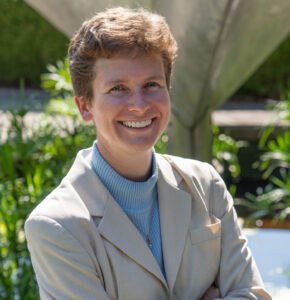
Assessing Outdoor Learning
 My last blog was about assessment in immersive classes and outdoor or wild learning. As much as assessment is about how I assess my students in those classes, assessment is also for me. How do I know if my outdoor classes and lessons are working?
My last blog was about assessment in immersive classes and outdoor or wild learning. As much as assessment is about how I assess my students in those classes, assessment is also for me. How do I know if my outdoor classes and lessons are working?
“Assessment” often feels like a dirty word. Generally, I dread it when I see the word in an email subject or agenda line. At the end of the semester, after I get my grades in, I still have one more set of forms to fill out to “assess” the effectiveness of my courses in order to appease the accrediting gods. I hate that paperwork. It is the opposite of everything wild I am trying to do. But the intent is not wrong. I ought to be assessing the effectiveness of my classes, my assignments, and my learning activities so that I know if they’re helping my students learn. Perhaps I need to make adjustments so students can thrive. The paperwork I fill out for assessment does not usually lead to this thoughtfulness, but it is important that I continually assess throughout the semester. What seems to be helping or hindering student learning?
At this point I need to articulate to myself why I take students outdoors. Is it just because I prefer being outdoors, or is there a particular point of learning that is facilitated better outdoors? Just as I assess how well students are meeting the goals I have for them, I have to assess how well my activities and locations meet the goals I have for them. Then I can assess how successful the activity is. Even if the answer is simply, “It’s a beautiful day and I’d rather be outdoors than in a stuffy classroom,” I can assess whether students learn what I hope they will learn that day or if being outdoors hinders their learning in some way. For instance, Was I harder to hear? Do I need to stand closer to them or project better? Do I need to be clearer about what they should be taking notes on? And if I make those changes the next time, do they help, or do I need to take us back inside?
In general, though, the question is what outdoor learning is about. As I’ve said before, I hope being outdoors makes students feel more playful and therefore more curious and open to learning. I want being outdoors to ground them more in the present, in their world, with each other. That is, I want being outdoors to make them more human in our AI world. I want it to make them more open to conversation with each other. I want them to feel less anxious because they feel the sun on their skin and the sun makes life feel more possible, especially after a long winter, and being less anxious helps them learn. Or I want them outdoors because a walking role-play is best done outdoors or an art scavenger hunt between multiple buildings. Could I do that lesson as effectively indoors? For my immersive courses, the goal is for students to be more present to one another with fewer distractions.
As I consider these goals through a semester, I ask questions like, “Have I introduced or nourished any distractions I didn’t intend to?” “What did location add to the lesson and to their learning?” “Are students engaging with each other and material more or less than they would indoors?” One method to assess this is through my own observations, but answering my own questions, especially when I love being outside, is prone to biased answers. Observations in immersive classes are more reliable because of the sheer amount contact I have with students, but even then I am human and have blind spots.
So I ask questions of students on mid-semester written evaluations. I listen when students are in my office hours talking about what’s hard for them. Sometimes when students come early to class I just ask them explicit questions about something I’m curious about: “Can you hear your classmates well enough outside?” “Do you have any suggestions to make this activity more engaging?” I ask colleagues to come observe me teach and give me feedback. And in the end, I look again at student work to see if they are learning what I hope they are learning. A final reflection assignment I give is especially helpful for understanding whether they are being drawn more into themselves, their community, and their world. In immersive classes this is especially true of their final reflection assignment as well as closing rituals for the community of the class.
Are any of these assessments scientific? Not really. I’m looking at far too many variables at once. We always are. A classroom is a certain kind of laboratory, but not the kind where we can isolate a single variable to experiment on. So we do our best. We stay open to the wildness of our classroom in all its wild ways and hope to be attentive enough to keep our students learning wildly.
Leave a Reply